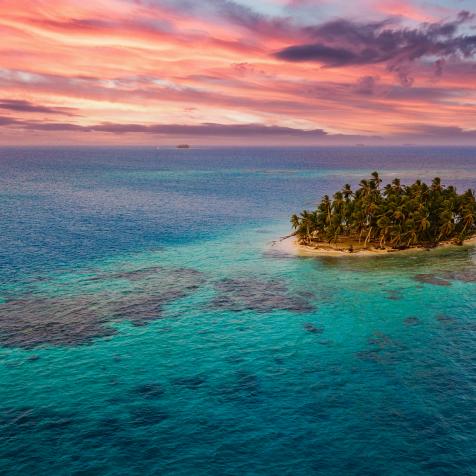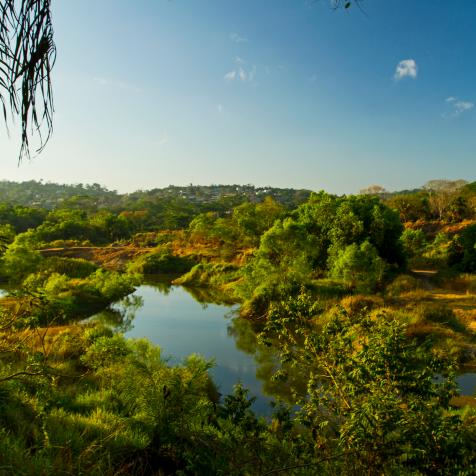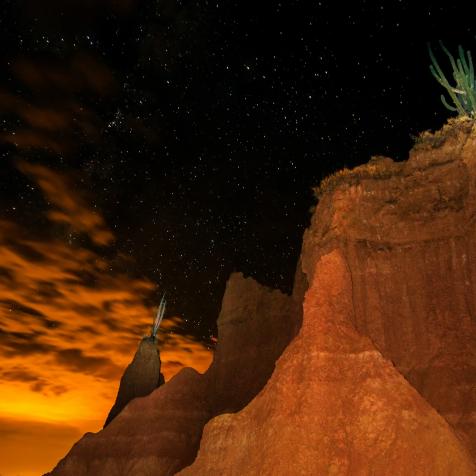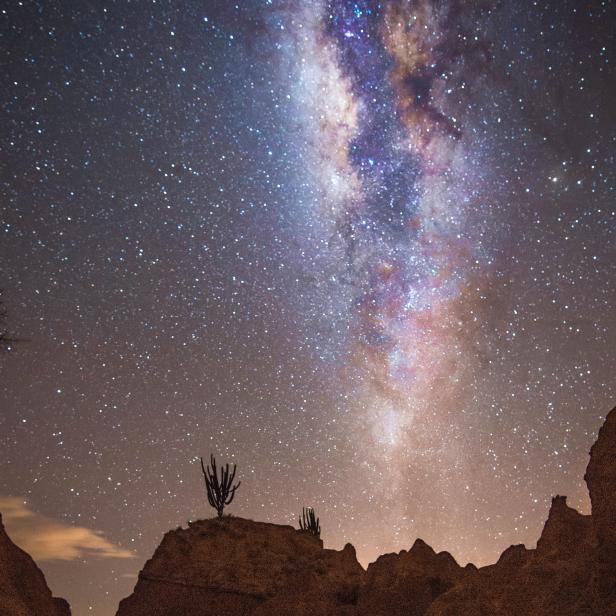
GettyImages/Luis Muñoz
Is This Mars-like Desert the World’s Best Spot to Watch the Stars?
Forget Chile’s Atacama Desert, or Hawaii’s Mauna Kea. A petrified forest in Colombia is where you want to go for the best stargazing on the planet.
Tatacoa is located in the South American country’s Huila department, and its red, Mars-like landscape is often overlooked – and wrongly so – in favor of more famous destinations.
Known as Tatacoa Desert, despite not actually being a desert, the remote area is an hour’s drive from the nearest city of Neiva, along a dusty road. Getting to the destination is part of the challenge; the desert is isolated even by Colombia’s standards. First, a bus from the capital of Bogotá to Neiva, and then you’ll need to hitch a ride in one of the minivans that ferry locals to and from the city to Villavieja, a small town known as the gateway to Tatacoa. From there, you’ll need to hail a taxi or a tuk-tuk, and you’ll need cash to pay for it.
Visitors can either opt to camp in one of the few grounds that are there, or book a night at the Noches de Saturno, a small, basic hostel with a shaded garden, and a swimming pool.
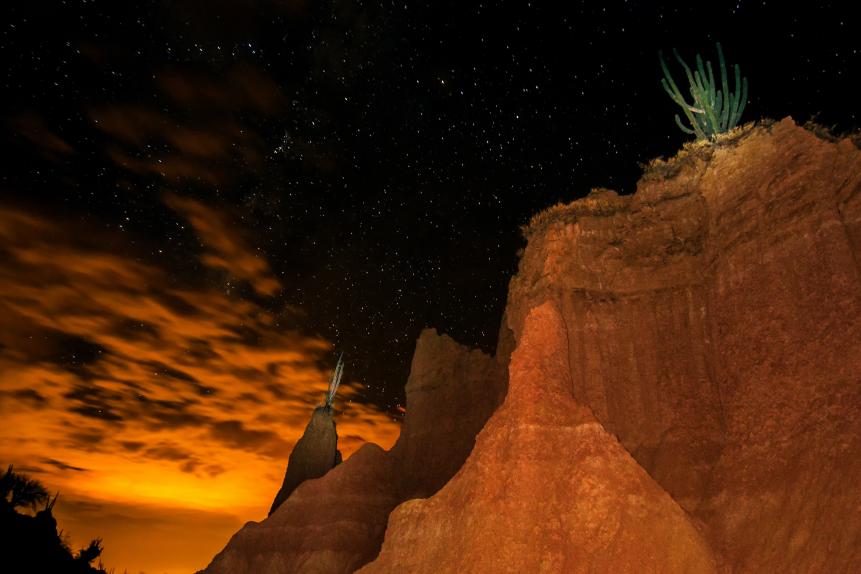
GettyImages/Jesse Kraft for EyeEm
With no light pollution, astronomy aficionados can hike out to the middle of the rocky plains, pitch up a tent under the stars - and wait for darkness to fall to reveal up to 88 constellations that are visible in this rare location.
The surreal topography alone is reason enough to visit. Cacti protrude from rippling red rocks and an unobstructed horizon makes you feel as if you really are on another planet. By day, hiking, quad biking and horse riding are the area’s main activities. But most people come for the night, when both the northern and southern hemispheres provide a spectacular light show.
Tatacoa’s dry conditions and equatorial location, make it a prime viewing spot for astronomical wonders. There’s also the choice of two observatories; the government-run Observatorio Astronómico de la Tatacoa, or the smaller, more intimate Tatacoa Astrononmia. The latter is run by Javier Fernando Rua Restrepo, a Colombian native who hails from the city of Cali, and was so passionate about the stars he upped sticks and moved to the Tatacoa.
“We are so close to the equator,” Restrepo explains, “that you can see the whole of the northern and southern hemispheres from one location.”
Once a year, on July 21, Restrepo holds “star parties” – Fiesta de Estrellas – where people from all over the world travel to camp out and stargaze. Tourists set up tents around Restrepo’s observatory and wait for nighttime to come. Once darkness falls, the real adventure begins. Using Restrepo’s impressive range of telescopes, many of which have been donated by astronomers, visitors can gape in awe at the constellations.
Restrepo recalls one visitor who attended one of his star parties. He was so impressed by the set-up, and by Restrepo’s enthusiasm for spreading his love of astronomy, that he gave the telescope he’d brought with him to Restrepo.
“He wanted as many people as possible to enjoy the stars in Tatacoa.”
If you’re wanting to experience the full impact of the eerie desert then take a midnight hike through the twisting, turning valleys with their deep red hues illuminated by the night sky. For the best views, make sure you check the moon’s waxing and waning schedule; a full moon will mean the stars will be less visible.
Tatacoa may be difficult to get to, but its unique setting and breathtaking skies make it more than worth the trek.









